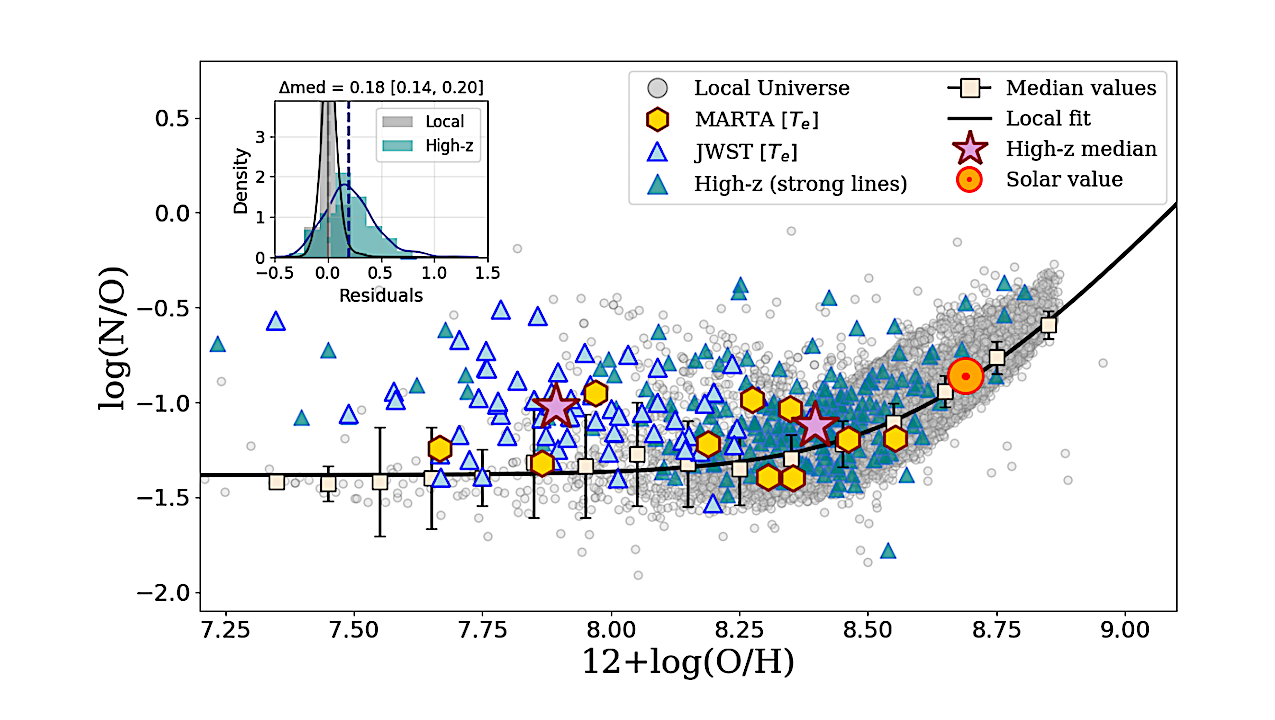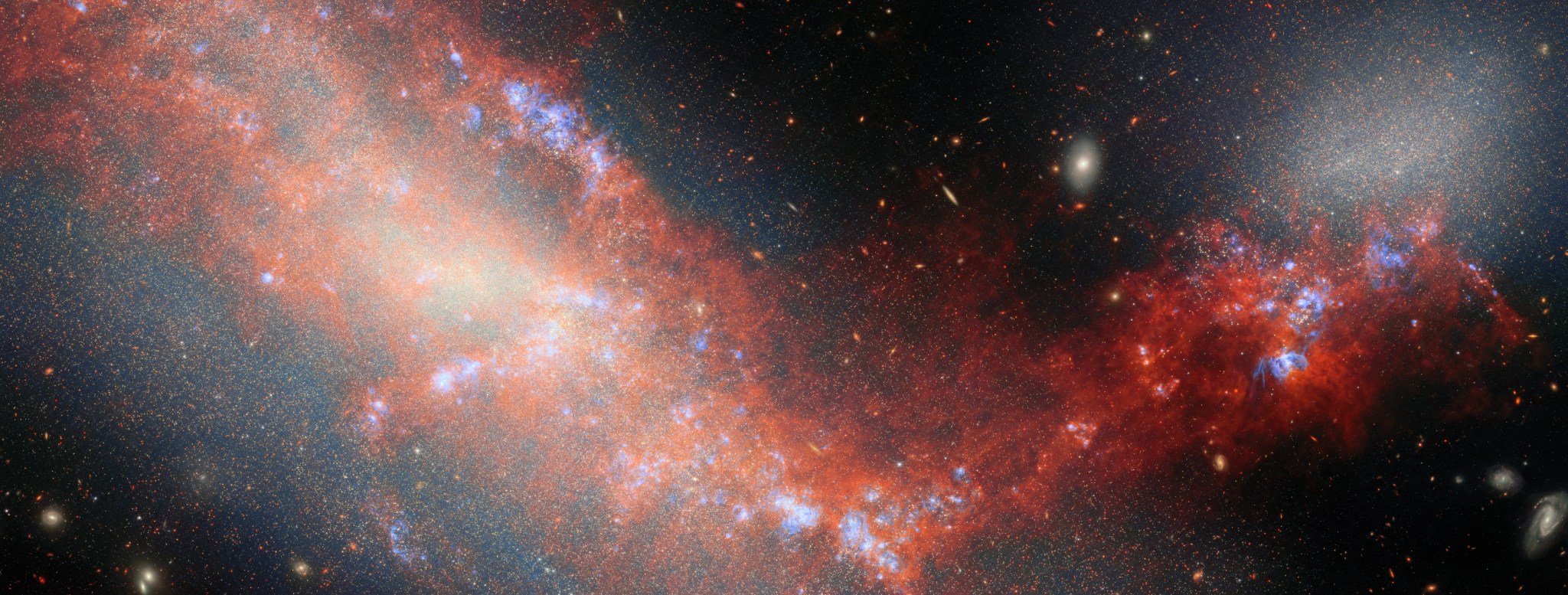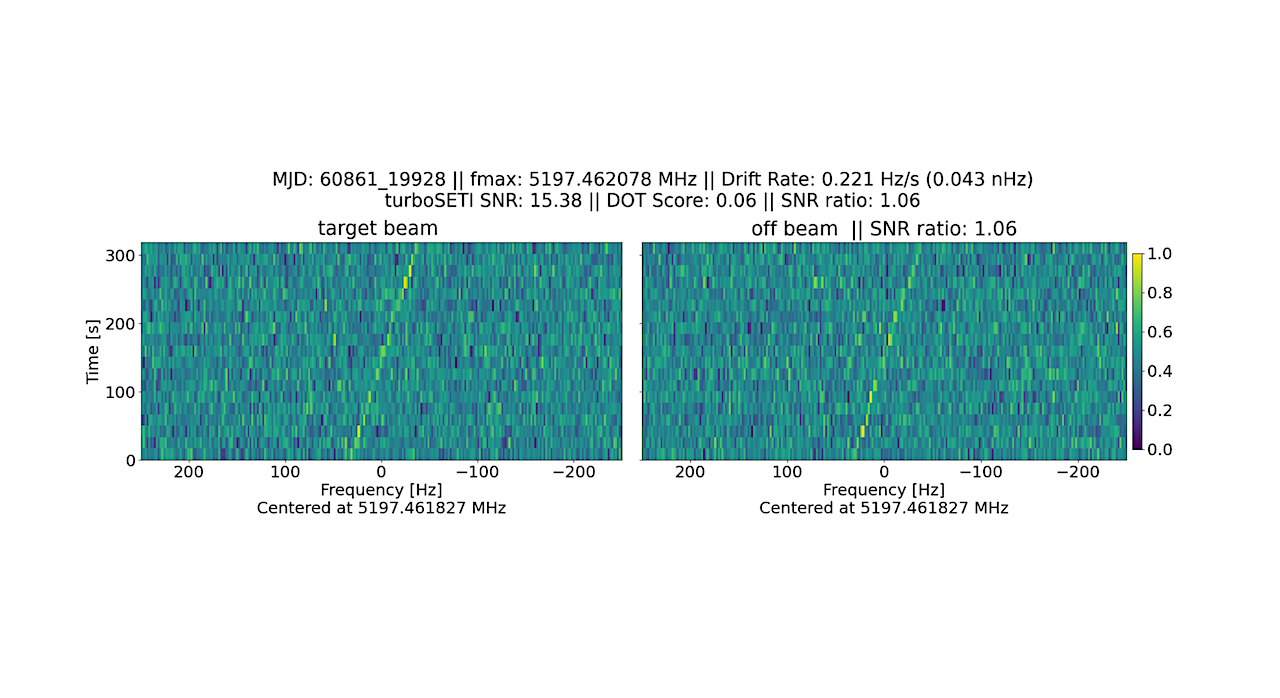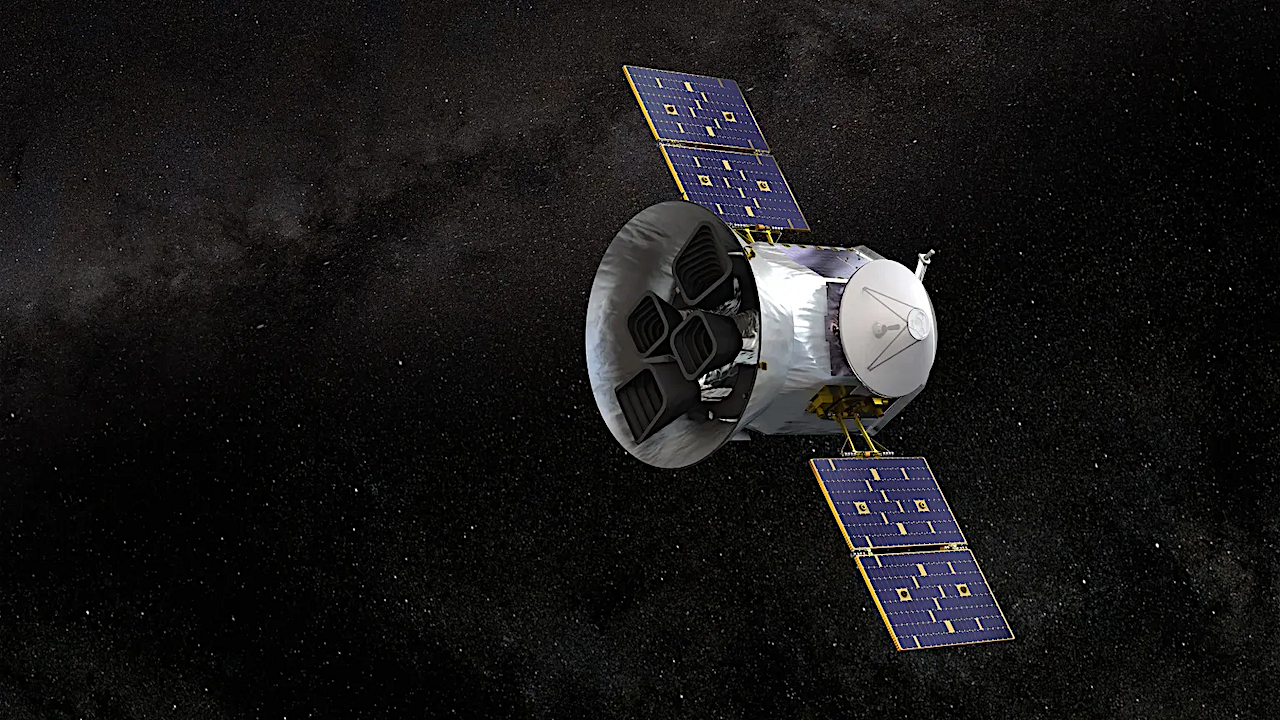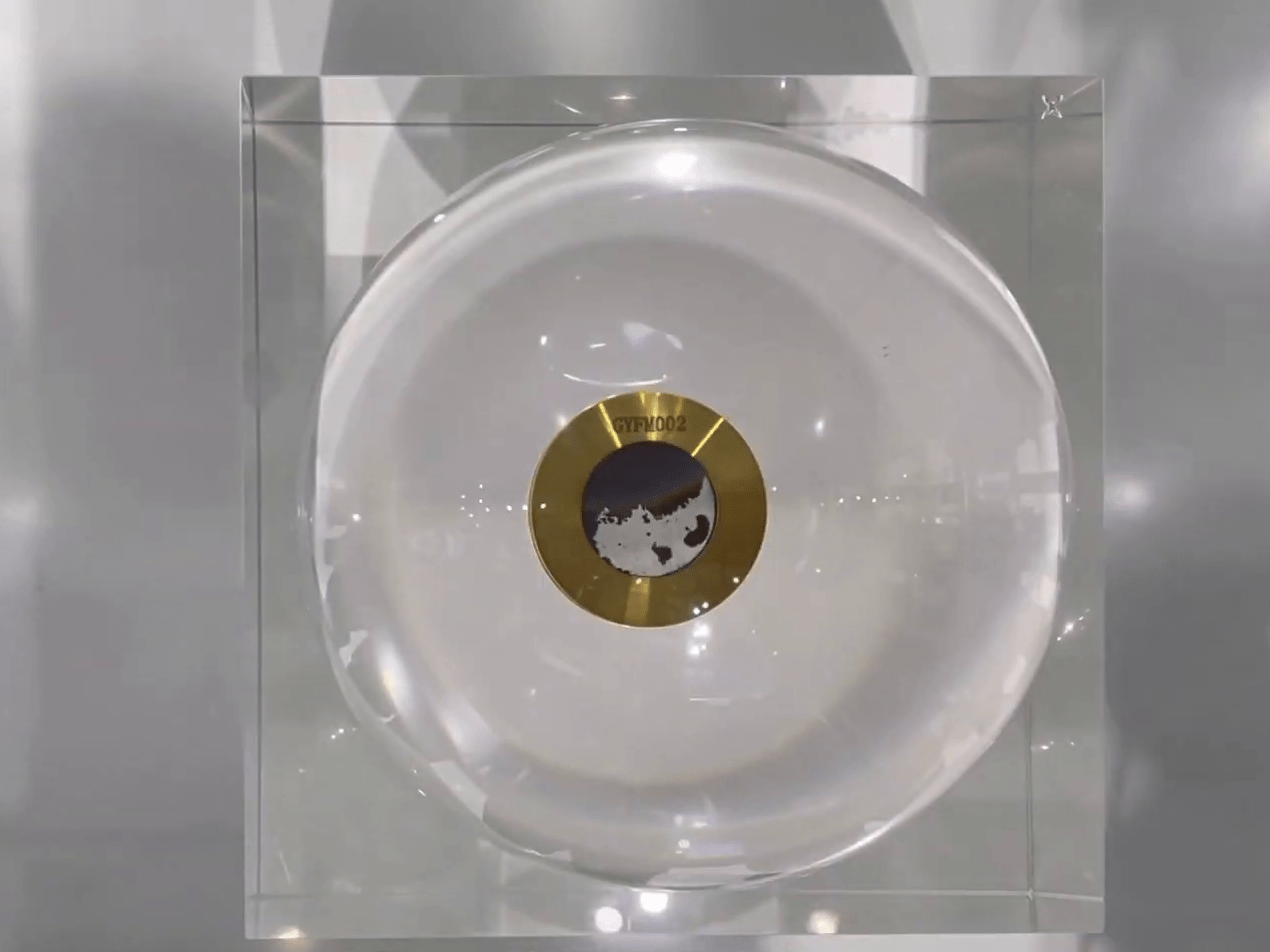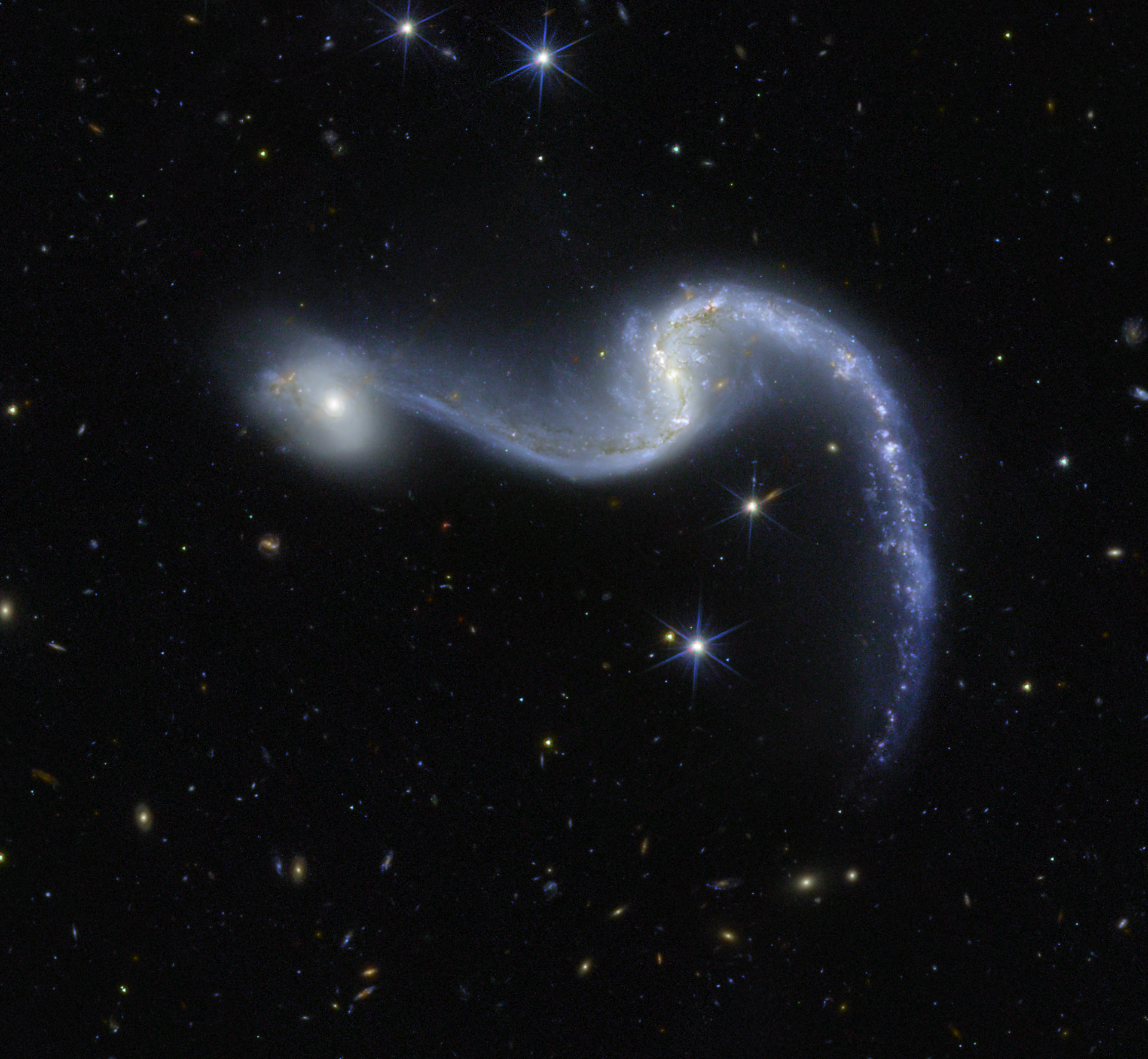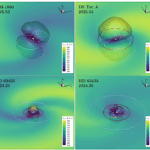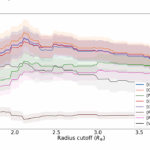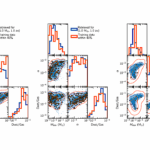Relation between N/O and O/H for our full sample, as described in Section 2. Gold hexagons indicate MARTA galaxies with direct measurements, and light-blue triangles show the JWST auroral-line dataset.
These two galaxies are named NGC 4490 and NGC 4485, and they’re located about 24 million light-years away in the constellation Canes Venatici (The Hunting Dogs). They are the closest
12 min read Preparations for Next Moonwalk Simulations Underway (and Underwater) In 2025, NASA’s Armstrong Flight Research Center in Edwards, California, advanced work across aeronautics, Earth science, exploration technologies, and
Radio spectrograms from our ATA observations. The diagonal stripe at the center is visible in observations of 3I/ATLAS as well as in off-target observations – characteristics expected from local (human)
Transiting Exoplanet Survey Satellite (TESS) — NASA ROSES-25 Amendment 33: D.3D TESS General Investigator Final Text and Phase-1 Proposals Due March 10, 2026, via ARK/RPS. The Transiting Exoplanet Survey Satellite
21 December 2025, Čakovec — Genesis Space Flight Laboratories launches its Microgravity Research Rideshare Program, making it easier and more affordable to conduct retrievable experiments in space. From now on,
The time is ripe to end the “Wolf Amendment,” a congressional bar inhibiting civil collaboration between the United States and China in space. The impetus for the law was noble
New Mexico — December 22, 2025 — Desert Works Propulsion (DWP) today announced the expansion of its domestic electric propulsion development and testing capabilities to address growing demand for advanced
Galaxy NGC 646 sparkles like a cosmic holiday garland in this new image from the European Space Agency’s Euclid space telescope. This large barred spiral galaxy is located in the
In the quarter century that humans have lived and worked aboard the International Space Station, astronauts and visitors from around the world have celebrated countless holidays more than 250 miles
-
 01From Polymerization-Enabled Folding and Assembly to Chemical Evolution: Key Processes for Emergence of Functional Polymers in the Origin of Life
01From Polymerization-Enabled Folding and Assembly to Chemical Evolution: Key Processes for Emergence of Functional Polymers in the Origin of Life -
 02Panasonic Leica Summilux DG 15mm f/1.7 ASPH review
02Panasonic Leica Summilux DG 15mm f/1.7 ASPH review -
 03Two Black Holes Observed Circling Each Other for the First Time
03Two Black Holes Observed Circling Each Other for the First Time -
 04How New NASA, India Earth Satellite NISAR Will See Earth
04How New NASA, India Earth Satellite NISAR Will See Earth -
 05And Thus Begins A New Year For Life On Earth
05And Thus Begins A New Year For Life On Earth -
 06Astronomy Activation Ambassadors: A New Era
06Astronomy Activation Ambassadors: A New Era -
07SpaceX launch surge helps set new global launch record in 2024


